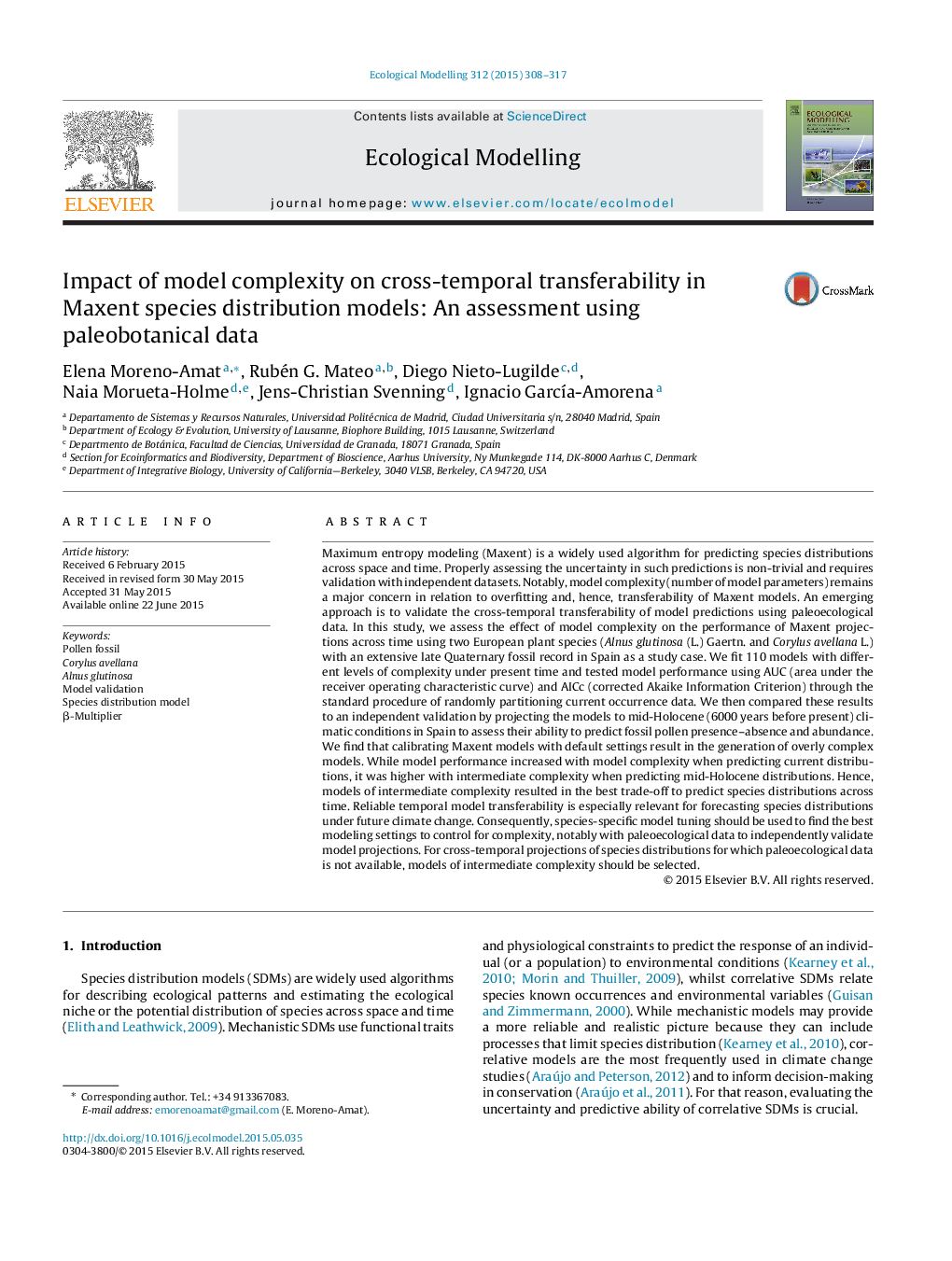| کد مقاله | کد نشریه | سال انتشار | مقاله انگلیسی | نسخه تمام متن |
|---|---|---|---|---|
| 6296563 | 1617435 | 2015 | 10 صفحه PDF | دانلود رایگان |
عنوان انگلیسی مقاله ISI
Impact of model complexity on cross-temporal transferability in Maxent species distribution models: An assessment using paleobotanical data
ترجمه فارسی عنوان
تاثیر پیچیدگی مدل در انتقال متقابل زمان در مدل های توزیع گونه های حداکثر: ارزیابی با استفاده از داده های پائئوبوتانیک
دانلود مقاله + سفارش ترجمه
دانلود مقاله ISI انگلیسی
رایگان برای ایرانیان
کلمات کلیدی
موضوعات مرتبط
علوم زیستی و بیوفناوری
علوم کشاورزی و بیولوژیک
بوم شناسی، تکامل، رفتار و سامانه شناسی
چکیده انگلیسی
Maximum entropy modeling (Maxent) is a widely used algorithm for predicting species distributions across space and time. Properly assessing the uncertainty in such predictions is non-trivial and requires validation with independent datasets. Notably, model complexity (number of model parameters) remains a major concern in relation to overfitting and, hence, transferability of Maxent models. An emerging approach is to validate the cross-temporal transferability of model predictions using paleoecological data. In this study, we assess the effect of model complexity on the performance of Maxent projections across time using two European plant species (Alnus glutinosa (L.) Gaertn. and Corylus avellana L.) with an extensive late Quaternary fossil record in Spain as a study case. We fit 110 models with different levels of complexity under present time and tested model performance using AUC (area under the receiver operating characteristic curve) and AICc (corrected Akaike Information Criterion) through the standard procedure of randomly partitioning current occurrence data. We then compared these results to an independent validation by projecting the models to mid-Holocene (6000 years before present) climatic conditions in Spain to assess their ability to predict fossil pollen presence-absence and abundance. We find that calibrating Maxent models with default settings result in the generation of overly complex models. While model performance increased with model complexity when predicting current distributions, it was higher with intermediate complexity when predicting mid-Holocene distributions. Hence, models of intermediate complexity resulted in the best trade-off to predict species distributions across time. Reliable temporal model transferability is especially relevant for forecasting species distributions under future climate change. Consequently, species-specific model tuning should be used to find the best modeling settings to control for complexity, notably with paleoecological data to independently validate model projections. For cross-temporal projections of species distributions for which paleoecological data is not available, models of intermediate complexity should be selected.
ناشر
Database: Elsevier - ScienceDirect (ساینس دایرکت)
Journal: Ecological Modelling - Volume 312, 24 September 2015, Pages 308-317
Journal: Ecological Modelling - Volume 312, 24 September 2015, Pages 308-317
نویسندگان
Elena Moreno-Amat, Rubén G. Mateo, Diego Nieto-Lugilde, Naia Morueta-Holme, Jens-Christian Svenning, Ignacio GarcÃa-Amorena,
